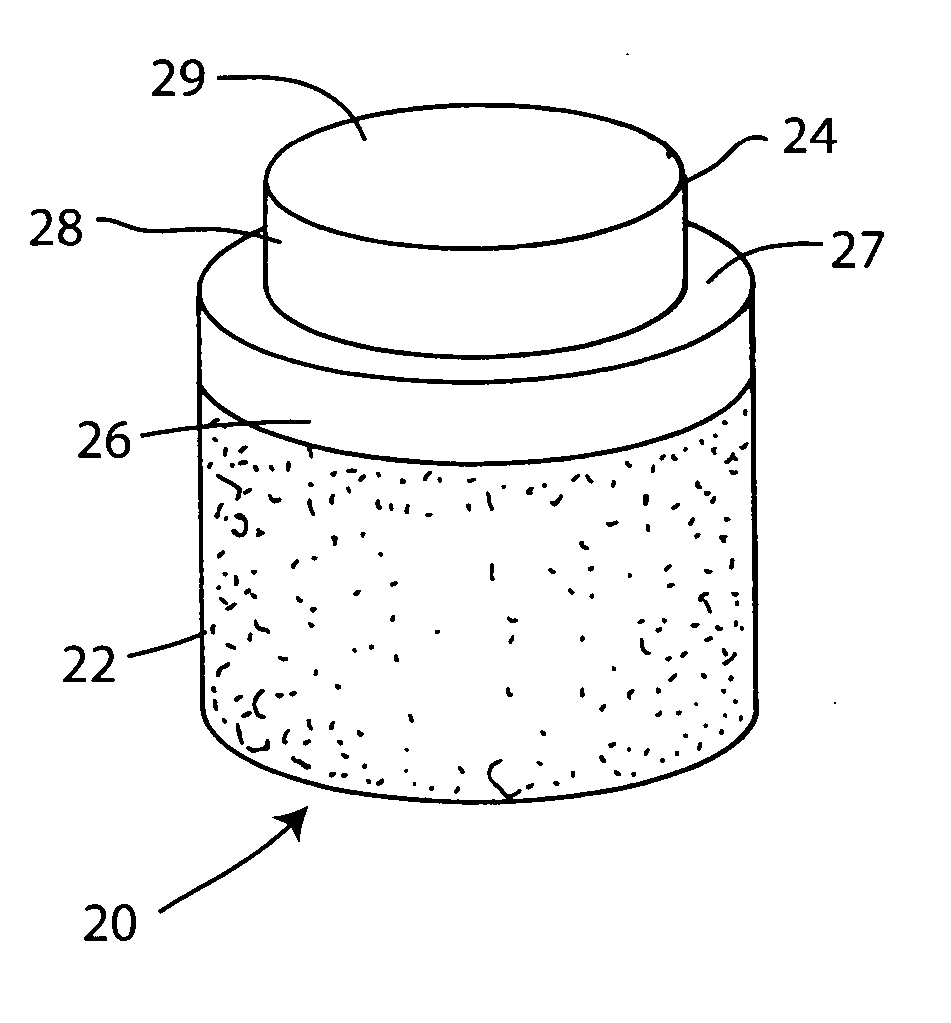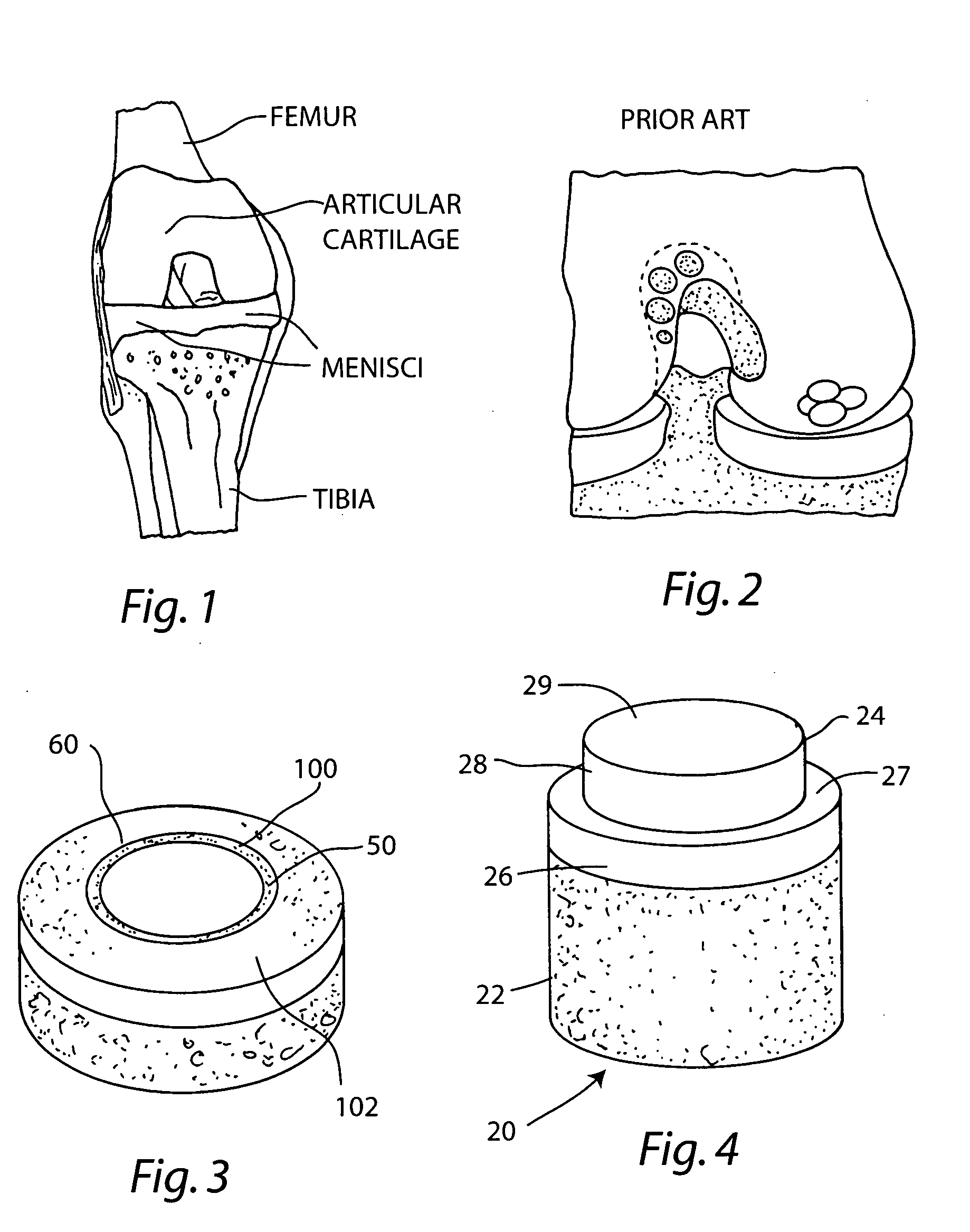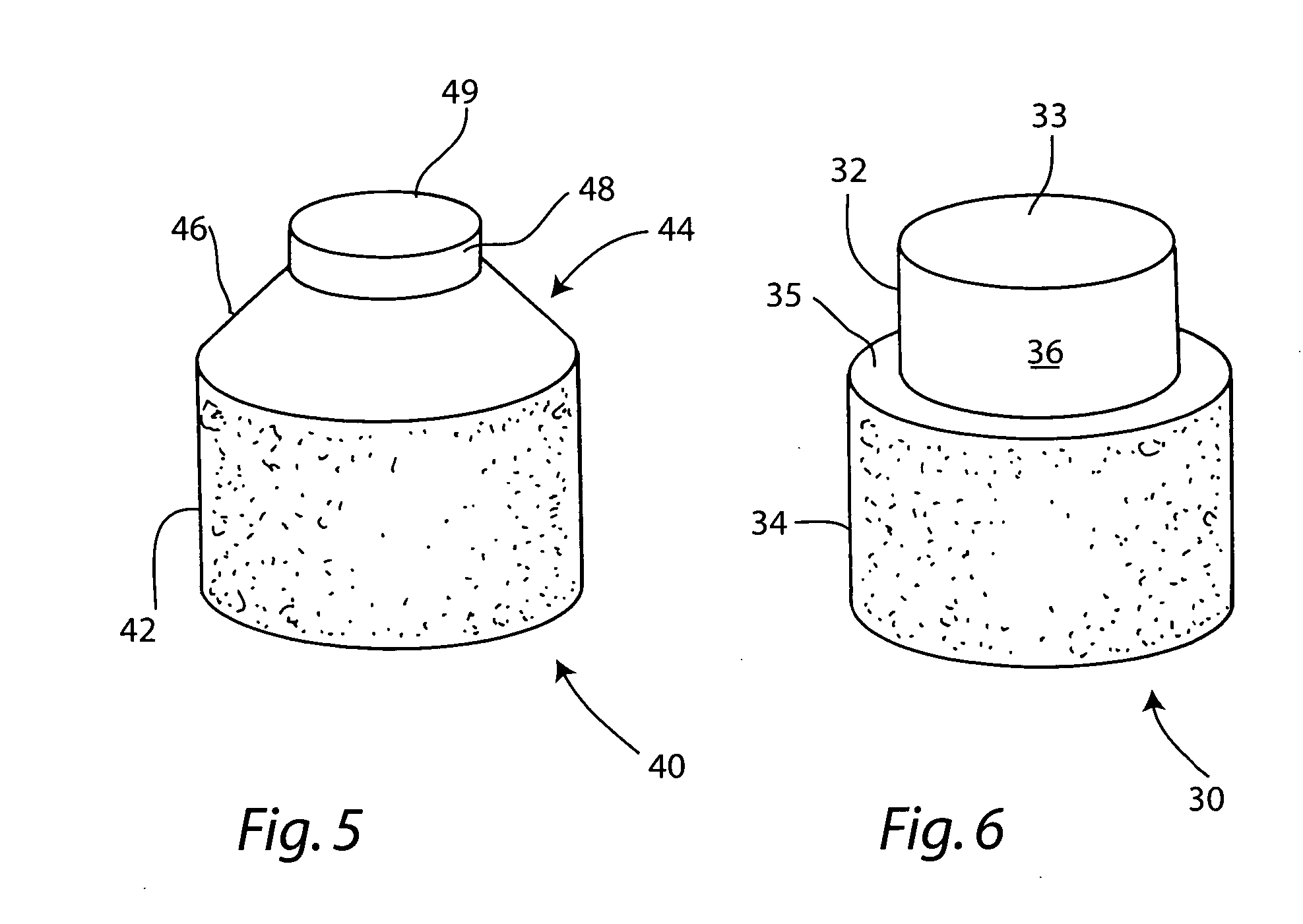Cartilage allograft plug
a cartilage allograft and plug technology, applied in the field of implants, can solve the problems of affecting the healing effect of articular cartilage lesions, affecting the healing effect of hyaline cartilage, and limiting the regeneration of hyaline cartilage, so as to increase the migration and proliferation of chondrocytes
- Summary
- Abstract
- Description
- Claims
- Application Information
AI Technical Summary
Benefits of technology
Problems solved by technology
Method used
Image
Examples
example 1
[0049] A non-viable or decellularized osteochondral plug consisting of a subchondral cylindrical bone base and overlying smaller diameter cylindrical cartilage cap cut from the original plug block was treated with a solution or variety of solutions such as hyaluronidase (type IV-5), trypsin and a chloroform / methanol to remove the cellular debris as well as the proteoglycans as noted in the treatment described above. It is believed that this removal provides signaling to stimulate the surrounding chondrocytes to proliferate and form new proteoglycans and other factors producing new matrix. The plug is then subjected to an antibiotic soak as shown and milled to a configuration shown in the drawing to have an interference fit for the bore size cut in the patient. The diameter of the cylindrical subchondral bone portion of the plug ranges from 1 mm to 30 mm but is preferably 3 mm to 10 mm which is small enough to fit through the endoscopic cannula, but large enough to minimize the numbe...
PUM
| Property | Measurement | Unit |
|---|---|---|
| water content | aaaaa | aaaaa |
| distance | aaaaa | aaaaa |
| distance | aaaaa | aaaaa |
Abstract
Description
Claims
Application Information
 Login to View More
Login to View More - R&D
- Intellectual Property
- Life Sciences
- Materials
- Tech Scout
- Unparalleled Data Quality
- Higher Quality Content
- 60% Fewer Hallucinations
Browse by: Latest US Patents, China's latest patents, Technical Efficacy Thesaurus, Application Domain, Technology Topic, Popular Technical Reports.
© 2025 PatSnap. All rights reserved.Legal|Privacy policy|Modern Slavery Act Transparency Statement|Sitemap|About US| Contact US: help@patsnap.com



